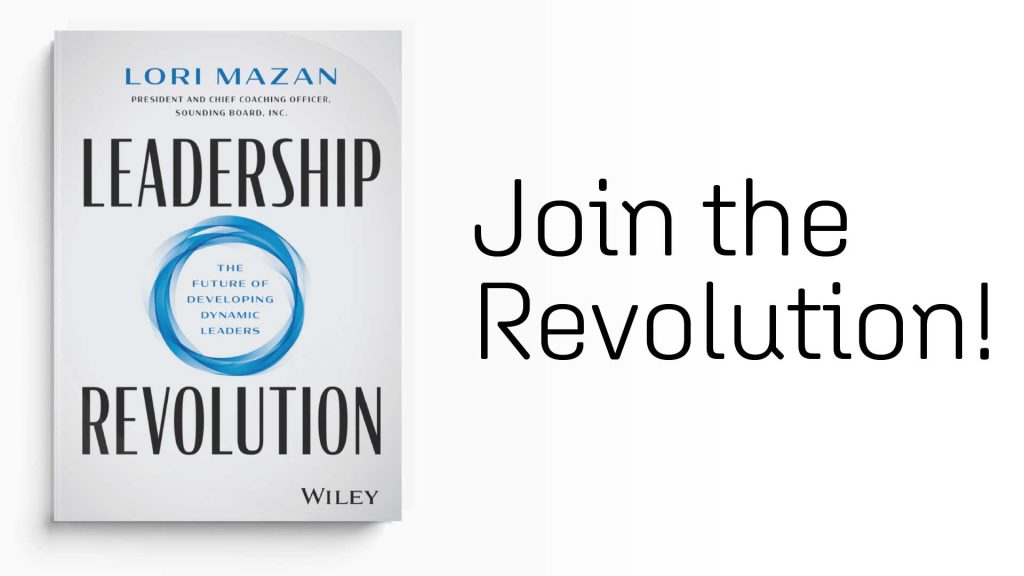One of the biggest work-related myths that has been debunked over the last two years is the idea that you can bring one part of yourself to work and leave the other parts at home. Maybe once you were able to put on a facade or play down what was happening in the non-work side of your life, but if we are being honest with ourselves, that never really worked, did it? The last two years have proven what we already knew — but maybe didn’t want to admit — you can’t separate who you are at work from who you are outside of work. At least, not completely.
As Sounding Board’s Senior Director for Coaching Excellence and a leadership and executive coach, I’ve coached hundreds of leaders, many of whom believe that they must compartmentalize themselves to show up fully at work, and, in turn, may have unconscious or unrealistic expectations that their employees do the same. A fellow coach of mine once shared a story about a coachee who was navigating a divorce but didn’t realize the impact that was having on their energy level or mental focus, or how those things impacted their leader’s team. But it does have an impact, and it can be greater than one might think.
As leadership coaches, we coach people in the context of their leadership — the whole person, not just the part of themselves they believe they should bring to work. Sometimes this means that to help them propel their leadership to the next level, we need to explore how what they are navigating personally influences their leadership and the people they lead. It can be rich, vulnerable, and impactful work to help leaders see how their life events — divorce, caring for a sick child or partner, loss of a family member, etc. — carry over into how they show up at work and vice versa. A coach has to be adept at building trust, but what is so effective about this work is that it requires the leader to honor themselves as a human — and their own human experience — which better equips them to do the same with those they work with and lead.
The year 2020 brought us all this very opportunity. When COVID-19 was new, everyone’s lives were changing rapidly and many aspects of how we balanced work and life were turned upside down. Leaders had to look at how they were managing work, schooling their children, dealing with illness, etc. They had to reflect on how this juggling act was impacting how they led their employees, and how their employees were performing or leading. Plus, all of this was happening while on conference calls from makeshift desks on whatever open surface they could find in their home. It forced all of us to literally see people differently after seeing them in their home environment. It is experiences like these that solidify for Sounding Board that the work to grow leaders means developing and evolving human beings, starting with yourself.
What is human-centered leadership?
Human-centered leadership sounds simple. You center your leadership around the people you work with and the culture you are trying to create. But nothing about human beings is simple. We are dynamic creatures. It takes emotional and social intelligence to be a human-centered leader. You need to know yourself and engage in regular self-reflection practices to understand how your own humanness shows up in the workplace. You also need to be able to look beyond others’ words and behaviors to reflect on how someone else may be thinking, perceiving, behaving, or feeling. The more development you engage in for yourself as a leader, the more capable you will become at discerning how and why people behave the way they do, how your leadership is impacting them, and where you have influence or control to show up and impact people differently.
If you’re looking for a dictionary definition of human-centered leadership, Anthony Howard, author of Humanise: Why Human-Centred Leadership is the Key to the 21st Century and a global CEO coach, defines human-centered leadership as “leadership that puts people first.” He further clarifies that human-centered leadership “gives leadership a moral dimension, as it focuses on what is good and right, while building on the technical aspects of leadership, such as strategic capability, exercising influence, and enrolling people in a vision for the future.”
At Sounding Board, working on human-centered leadership in leadership coaching means first developing yourself, including your self-awareness, empathy, compassion, and emotional intelligence. The more expansive your leadership responsibilities become, the less likely you are to get real or authentic feedback from others. So, developing the muscles and practice to assess your own impact on others is crucial to be an experienced human-centered leader.
Becoming a Human-Centered Leader
As you begin thinking about how to lead from a human-centered place, consider these components of becoming a human-centered leader.
Lead Yourself
Start by asking yourself these questions:
- How does who you are as a person impact your leadership?
- What are you bringing into your work and the workplace that you haven’t been aware of up until now?
- What do you want your leadership to look like now and in the future?
- What would it mean for you to put people first?
Lead Others
When you’re thinking about leading your team, consider how you might replicate the leading you do with yourself. Spend time thinking about how you can put the people on your team first. How can you model what it looks like to bring your whole self to work? How can you encourage them to bring their whole selves to work? How can you support them when they do?
Lead for Impact
One person can make a difference in how an organization talks and thinks about how they support and lead their employees. Leaders take responsibility over the worlds they are a part of, and how they act is the culture. As your organization works to see the people behind the positions, it takes courageous conversations among leaders to talk about how they do this, what difference or impact it has, and how to approach it in a way that feels authentic while still managing execution of the work.
Being a human-centered leader requires consistently seeing your team members in the big and the small moments. It isn’t just knowing that leaders need to notice when someone might be struggling at work. It also means recognizing that each person is on a unique journey, and they need to be supported in navigating that journey, including being given the opportunity to develop and learn from the ups and downs. Considering how someone’s humanness influences their work engagement and performance is an important component in making sure that employees feel valued and are successful in the workplace.
Becoming a human-centered leader takes effort, but it’s the kind of effort that will help you grow as much as it will help the team you lead. By working with our leadership coaches, you can create a human-centered orientation to your leadership that builds trust, empowers your team, and ensures that employee wellness is at the forefront of the decisions you make. All you have to do is get started.
Lauren Morley Hutto, CPCC, PCC, is the Senior Director, Coaching Excellence and a certified leadership and executive coach for Sounding Board Inc.











